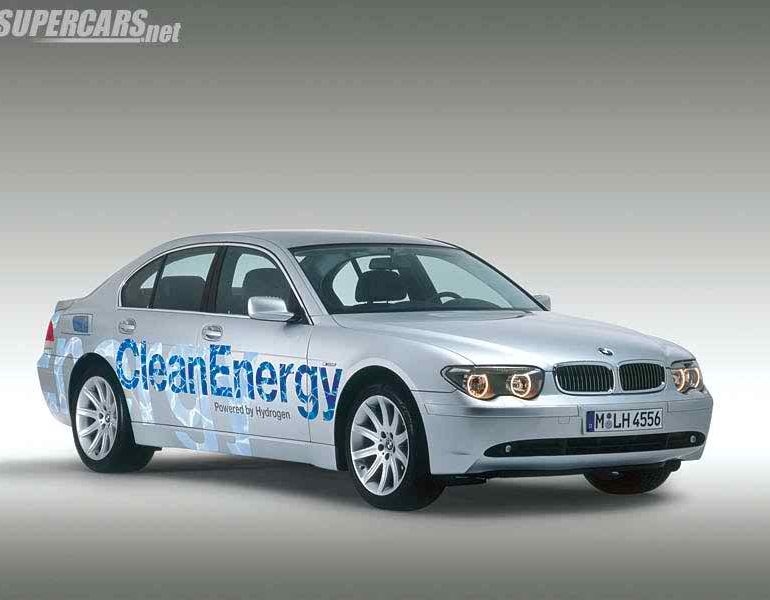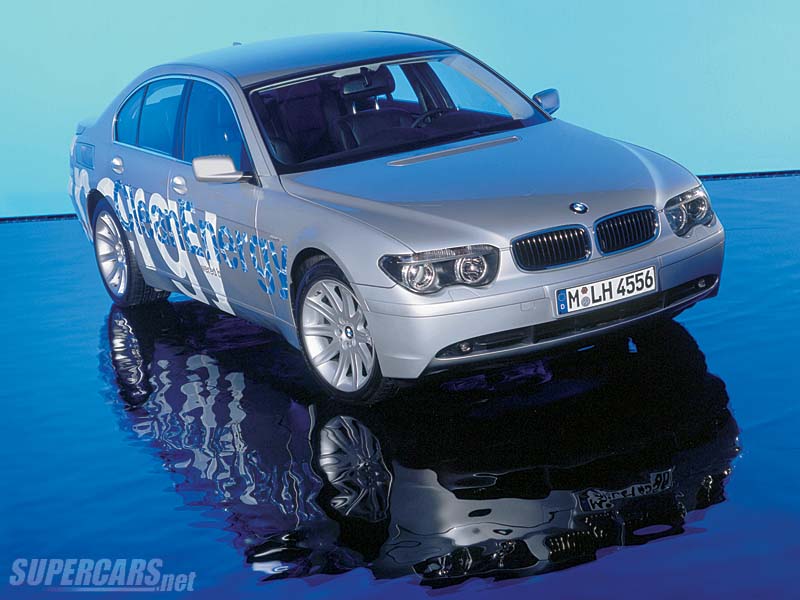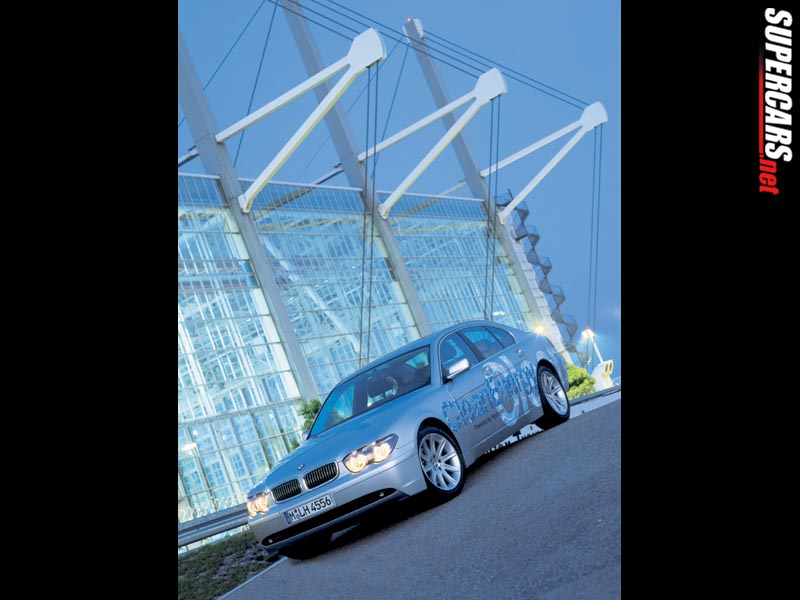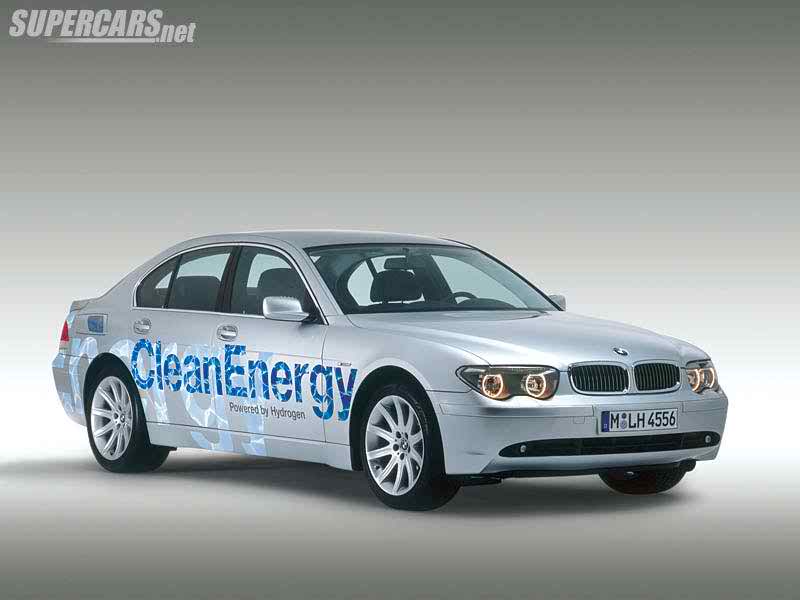2001 BMW 745h Concept
BMW is making major progress towards the next generation of hydrogen powered cars. The 745h represents the 6th BMW model to utilize the hydrogen drive technology. BMW claims the technology used in the 745h and other hydrogen models is suffieciently advanced to permit realistic large-scale production. However, hydrogen can only be a sensible alternative to gasoline if the electricity needed to generate it can be produced with renewable energy sources, such as solar, wind or hydroelectric power. Such energy sources combined with hydogen drives would yeild a zero emmission transportation system. Hydrogen burns without generating any CO2 emissions, that is the emissions responsible for the greenhouse effect & global warming.
The 745h contains the world’s first V8 that can be powered by both hydrogen & gasoline. The V8 is largely identical to the series production v8, utilizing bi-VANOS, VALVETRONIC and the fully Varibale Intake Manifold to reduce fuel consumtion. The hydrogen fuel source is a double-walled steel tank behind the rear seat-backs. The hydrogen is stored cryogenically – that is, in superchilled and liquid form – at a temperature of around minus 250 degrees. Two safety valves ensure controlled ventilation in the case of excess pressure. They are also part of the comprehensive safety concept which proved its reliability in numerous crash tests. Even in the case of a massive rear-end collisions in which the tank was impacted, the steel cylinder with dual, 2mm-thick walls, did not leak.
A further prerequisite for the introduction of hydrogen as fuel is a filling system which must be no more complicated than filling a car today. The low temperature of minus 250 degrees Celsius requires a special type of filling station. BMW has developed appropriate technology which is currently being demonstrated by the world’s first public robot fuel station for liquid hydrogen at the Munich airport. The fully automatic hydrogen fuelling operation takes less than three minutes and is a simple process.
In Detail
| type | Series Production Car |
| built at | Munich, Germany |
| engine | Bi-Fuel V8 |
| valvetrain | 4 Valves / Cyl w/BiVANOS & VALVETRONIC |
| displacement | 4398 cc / 268.4 in³ |
| bore | 92 mm / 3.62 in |
| stroke | 82.7 mm / 3.26 in |
| power | 137.2 kw / 184.0 bhp |
| specific output | 41.84 bhp per litre |
| front brakes | Discs |
| rear brakes | Discs |
| transmission | 6-Speed Auto |
| top speed | ~214.0 kph / 133.0 mph |










